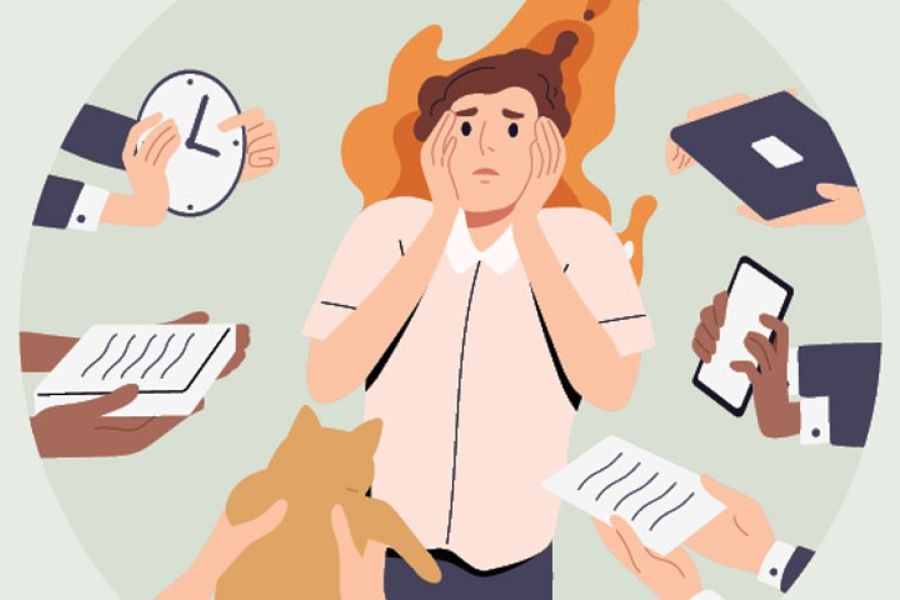In recent years, burnout has emerged as an increasingly prevalent issue among New Zealanders, affecting professionals across various industries. This phenomenon is not isolated to any single sector; instead, it reflects broader socio-economic trends and workplace dynamics that are reshaping the Kiwi workforce. Understanding the causes and consequences of burnout is crucial for technology strategists, as it directly impacts productivity, innovation, and the ability to adapt to rapid technological changes.
The Rising Tide of Burnout in New Zealand
Burnout, as defined by the World Health Organization, is a syndrome resulting from chronic workplace stress that has not been successfully managed. In New Zealand, a 2021 survey by Stats NZ revealed that one in three workers reported feeling burnt out, with the technology and healthcare sectors being particularly affected. This statistic underscores a growing concern that demands attention from business leaders and policymakers alike.
The rise in burnout can be attributed to several factors, including increased workloads, job insecurity, and the blurring of work-life boundaries due to the pervasive use of digital technology. The COVID-19 pandemic has further exacerbated these issues, as remote work has become the norm, leading to longer working hours and reduced opportunities for social interaction and relaxation.
Case Study: The Technology Sector’s Struggle with Burnout
The technology industry in New Zealand is a key driver of economic growth, contributing significantly to GDP and employment. However, it is also a sector experiencing high levels of burnout. A Wellington-based software company, for example, reported a 45% increase in sick leave related to stress and burnout in 2022. The company attributed this rise to prolonged periods of remote work, increased client demands, and the pressure to innovate rapidly.
In response, the company implemented several measures to combat burnout, including flexible working hours, regular mental health check-ins, and mindfulness training sessions. These initiatives led to a 30% reduction in stress-related leave and improved employee satisfaction scores, highlighting the importance of proactive strategies in managing workplace stress.
Economic and Policy Context in New Zealand
New Zealand's economy is characterized by a strong emphasis on small and medium enterprises (SMEs), which constitute over 97% of all businesses. These organizations often operate with limited resources, leading to increased workloads and stress for employees. The Ministry of Business, Innovation and Employment (MBIE) has recognized the impact of burnout on productivity and is actively promoting workplace wellness programs as part of its strategy to support SMEs.
Moreover, the Reserve Bank of New Zealand's monetary policies, aimed at stabilizing the economy in the wake of the pandemic, have implications for business operations and employee well-being. Low interest rates have encouraged investment in technology and infrastructure, but they have also led to increased expectations for productivity and growth, contributing to the pressure on workers.
Data-Driven Insights: The Role of Workplace Culture
A study conducted by the University of Auckland in 2023 found that workplace culture plays a significant role in either mitigating or exacerbating burnout. Organizations that prioritize employee well-being and foster a supportive work environment report lower levels of burnout. For instance, companies that implement flexible work arrangements and prioritize mental health resources see a 25% reduction in burnout rates.
This data underscores the need for technology strategists to advocate for a cultural shift towards more sustainable work practices. By integrating wellness programs and promoting a healthy work-life balance, businesses can not only reduce burnout but also enhance overall productivity and employee retention.
Pros and Cons of Remote Work in the Context of Burnout
While remote work offers numerous advantages, it also presents challenges that can contribute to burnout. Understanding these pros and cons is essential for developing effective strategies to support employee well-being.
Pros:
- Flexibility: Remote work provides employees with greater control over their schedules, which can lead to improved work-life balance.
- Reduced Commute: Eliminating the daily commute saves time and reduces stress, contributing to better mental health.
- Increased Productivity: Many employees report being more productive when working from home, as they can create a personalized work environment.
Cons:
- Isolation: Lack of social interaction can lead to feelings of loneliness and detachment from the team.
- Blurred Boundaries: The absence of a clear separation between work and home life can lead to longer working hours and increased stress.
- Technology Overload: Constant connectivity can result in digital fatigue, contributing to burnout.
Addressing Burnout: Strategies and Solutions
To effectively address burnout, organizations must implement comprehensive strategies that encompass policy changes, cultural shifts, and individual support mechanisms. Here are some actionable steps for technology strategists:
1. Promote Work-Life Balance
Encourage employees to set boundaries between work and personal life. Implement policies that discourage after-hours emails and promote taking regular breaks. Offering flexible work arrangements can also help employees manage their time more effectively.
2. Invest in Employee Well-Being
Providing access to mental health resources, such as counseling services and stress management workshops, can significantly reduce burnout. Encourage open communication about mental health and create a supportive environment where employees feel comfortable seeking help.
3. Foster a Positive Workplace Culture
A positive workplace culture that values employee contributions and promotes teamwork can mitigate burnout. Recognize and reward employee achievements, and encourage collaboration and knowledge sharing among team members.
Myths and Misconceptions About Burnout
Despite the growing awareness of burnout, several myths persist that can hinder effective prevention and management. Here are three common misconceptions:
Myth 1: Burnout Only Affects High-Pressure Jobs
Reality: Burnout can occur in any job, regardless of the level of pressure or responsibility. It is not limited to high-stress environments but can also affect individuals in seemingly low-pressure roles.
Myth 2: Burnout is a Sign of Weakness
Reality: Burnout is not a reflection of an individual's strength or resilience. It is a response to prolonged stress and can affect anyone, regardless of their mental toughness.
Myth 3: The Solution to Burnout is Simply Taking Time Off
Reality: While taking time off can provide temporary relief, it is not a long-term solution to burnout. Addressing the root causes, such as workload management and workplace culture, is essential for sustainable recovery.
Future Trends and Predictions
Looking ahead, the issue of burnout will continue to be a critical concern for New Zealand businesses. As technology advances, the pace of work is likely to increase, necessitating proactive measures to support employee well-being. Here are some predictions for the future:
- By 2025, we can expect to see a greater emphasis on mental health support in the workplace, with more companies offering comprehensive wellness programs.
- The use of AI and automation in managing workloads will become more prevalent, helping to reduce the burden on employees and improve work-life balance.
- Policy changes at the national level may encourage more flexible working arrangements and mandate employee support initiatives to combat burnout.
Conclusion
Burnout is a complex issue that requires a multifaceted approach to address effectively. For technology strategists in New Zealand, understanding the causes and consequences of burnout is crucial for fostering a productive and innovative workforce. By promoting work-life balance, investing in employee well-being, and fostering a positive workplace culture, organizations can mitigate the impact of burnout and enhance their overall performance.
As we move forward, it is essential to remain vigilant and adapt to the changing needs of the workforce. Share your thoughts and experiences with burnout in the comments below. What strategies have you found effective in managing stress and promoting well-being in your organization?
People Also Ask (FAQ)
- How does burnout impact businesses in New Zealand? Burnout leads to decreased productivity, higher turnover rates, and increased healthcare costs, impacting the bottom line.
- What are the biggest misconceptions about burnout? A common myth is that burnout only affects high-pressure jobs. In reality, it can occur in any role with prolonged stress.
- What strategies can help prevent burnout? Promoting work-life balance, investing in mental health resources, and fostering a supportive workplace culture are effective strategies.
Related Search Queries
- Causes of burnout in New Zealand
- Burnout statistics NZ 2023
- Workplace wellness programs NZ
- Impact of remote work on burnout
- Managing stress in the workplace NZ
- Future of work in New Zealand
- Technology and mental health
- Employee well-being strategies
- Pros and cons of remote work
- How to prevent burnout
































KarissaHar
8 months ago